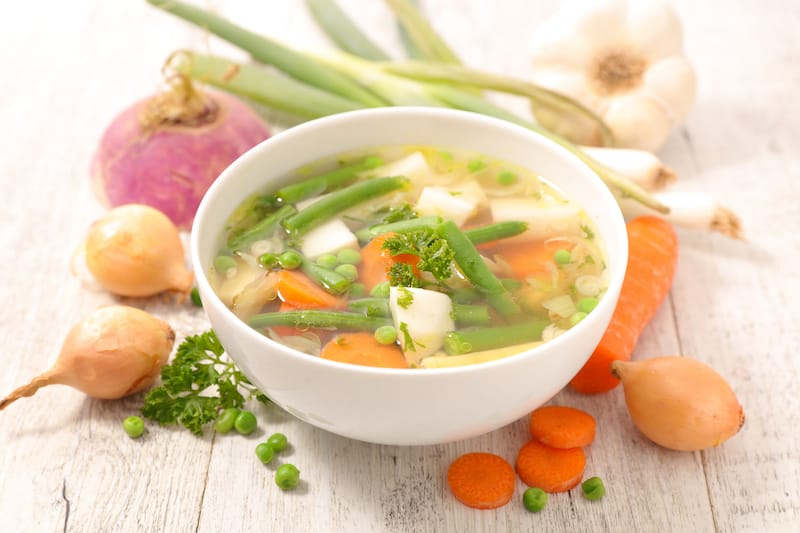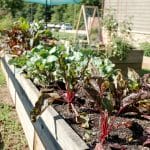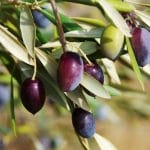Garden Vegetable Soup Recipe: A Year-Round Farm-to-Table Classic
Farm To Table Recipes

A Year-Round Garden Soup Recipe With Whatever’s Blooming
Every gardener I know has had that moment: you walk in from the garden with a basket that makes no sense. A handful of chard, one lonely zucchini, some tired carrots, maybe a pepper if the squirrels left you any. Not enough of any one thing to make a proper meal — but together? They’re dinner.
That’s where this soup comes in. It’s not a recipe so much as a rhythm. It’s the kind of soup that changes right along with the garden. In July, I’ve thrown in tomatoes that were practically melting on the counter. By January, it’s kale — tough and scrappy, but still hanging on out there in the frost. Some weeks I bulk it up with beans I put up last fall, other times a scoop of wild rice, or just whatever’s rattling around in the pantry. It never seems to mind. Somehow it always turns out, like a little bit of kitchen luck in a pot.
Why This Recipe Works
Because it’s flexible, instead of falling apart if you’re missing an ingredient, it adapts. Too many carrots? Toss them in. Out of kale? Use spinach. Garden looking bare? The pantry can fill the gaps. This soup bends with whatever you’ve got, and that’s what makes it work every single time.
Seasonal Flexibility
Whatever the garden throws at you — zucchini glut, too many beans, a random bunch of beet greens — they’ll all find a place in this pot.
Healthy & Wholesome
It’s all vegetables, beans, and a bit of grain. A full meal in a bowl, no fuss.
Simple Method
Toss everything in the crock pot, walk away, and let it do the work while you’re out mulching the raspberries or running to the farmers’ market.
Make-Ahead Friendly
This soup tastes even better the next day, and it freezes like a dream. Perfect for those weeks when the garden (or life) has you stretched thin.
Ingredients
- 1 large yellow onion, chopped
- 1 tbsp fresh ginger, chopped (or swap in a little horseradish root for a garden twist)
- 4 garlic cloves, chopped
- ½ cup wild rice
- 1 sweet pepper (any color, chopped)
- 6 stalks of celery (or a handful of lovage stems/leaves)
- 4 large carrots, chopped
- 2–3 cups kale or Swiss chard, roughly chopped
- 1 zucchini or yellow squash, chopped
- 1–2 garden tomatoes, chopped
- 3 cups homemade vegetable stock (or more, enough to cover vegetables)
- 1½ cups cooked beans (cannellini, runner beans, or any dried beans you’ve got stored)
Ingredient Notes
Fresh Produce
Swap kale for beet greens or spinach. Out of carrots? Parsnips or rutabaga do the job.
Proteins or Grains
Beans are the backbone here. Any kind works. Wild rice can be substituted with barley, farro, or even quinoa if you have a jar hiding in the back of the cupboard.
Flavor Boosters
Fresh ginger adds a lift, but horseradish root lends it a more earthy quality. Homemade stock ties it all together — I keep freezer bags full of onion skins, carrot tops, and herb stems specifically for this purpose.
Instructions
- Chop all your vegetables into rough, bite-sized pieces.
- Add everything to the crock pot (or a large pot if cooking on the stove).
- Pour in vegetable stock and enough water to cover the vegetables.
- Season the soup to taste with salt and pepper and you can adjust the seasoning later if needed.
- Set the crock pot on low for about 8 hours (or simmer on the stove for 1–2 hours).
- Taste & Adjust. Add more salt, pepper, or add a squeeze of lemon juice if it needs brightness.
- Serve hot, ladled into big bowls, with a hunk of bread on the side.
Cooking Variations
Stovetop Method
Let it simmer for 1–2 hours, stirring occasionally, until the rice and beans are tender and flavors have melded.
Oven/Grill Method
Roast some of the root vegetables first (carrots, parsnips, squash) at 400°F until caramelized, then add them to the pot for a deeper flavor.
Slow Cooker/Instant Pot
Low and slow for 8 hours, or pressure cook for 30 minutes if you’re in a rush.
Here’s a fresh rewrite of that substitutions/variations section — same useful info, but phrased in a way that feels more personal and handwritten, while keeping it plagiarism-safe:
Easy Swaps & Seasonal Twists
Vegetables or Greens
If kale isn’t your thing (or it’s not what’s thriving), swap in spinach, beet greens, or even a bunch of turnip tops.
Running low on carrots? Toss in parsnips, rutabaga, or chunks of winter squash instead.
Proteins
Any beans will do the trick. Chickpeas, black beans, or even a scoop of lentils will change the character a little but still keep it hearty.
Grains or Starches
No wild rice on hand? Barley, farro, or quinoa all play nicely here.
By Season
Spring — Drop in asparagus tips or fresh shelling peas.
Summer — Pile on zucchini, green beans, okra, and those sun-warmed tomatoes that need using up.
Fall — Roast some pumpkin or butternut squash and stir it through.
Winter — Kale, potatoes, and dried beans make it stick-to-your-ribs satisfying.
Do you want me to carry this more neighborly rewrite across the whole recipe post so it all matches the same lived-in voice?
Fall Version
Roasted pumpkin, butternut squash, or sweet potatoes.
Winter Version
Hearty kale, leeks, potatoes, and dried beans.
Serving Suggestions & Storage
Pairings
This soup is best with crusty bread, cornbread, or a slice of homemade sourdough.
Toppings or Garnishes
A dollop of yogurt, fresh parsley, grated Parmesan, or a drizzle of chili oil, if you like a bit of heat.
Storage Tips
Fridge
Keeps 4–5 days in a sealed container.
Freezer
Freeze in quart jars or containers for up to 6 months. Reheat gently to keep veggies from going mushy.
Frequently Asked Questions
Can I freeze this soup?
Yes. Cool completely, then portion into freezer-safe containers, leaving a little headspace. It keeps ~6 months. Wild rice stays firm; barley/farro softens more after thawing. Reheat gently and adjust seasoning at the end.
How long does it last in the fridge?
About 4–5 days in a sealed container. The flavors deepen after day one. If it thickens, loosen with a splash of stock or water.
Can I make this vegetarian, vegan, or gluten-free?
It’s naturally vegetarian and vegan when you use vegetable stock. For gluten-free, pick grains like wild rice, white/brown rice, or quinoa. Skip barley or farro (they contain gluten).
What seasonal produce works best?
Spring: asparagus tips, peas, tender greens.
Summer: zucchini, green beans, okra, juicy tomatoes.
Fall: roasted pumpkin or butternut, carrots, parsnips.
Winter: kale, leeks, potatoes, dried beans.
Can I use canned tomatoes or frozen veggies?
Absolutely. Canned tomatoes add dependable flavor year-round (and hopefully you are canning your own at home from your summer harvest). Frozen corn, green beans, or peas work great—stir them in near the end so they don’t overcook.
How can I thicken (or thin) the soup?
To thicken, mash a ladle of beans/veg and stir back in, or simmer uncovered to reduce. To thin, add more stock or water and re-season with salt, pepper, and a squeeze of lemon.
Slow cooker, Instant Pot, or stovetop—what’s best?
Slow cooker: Low for ~8 hours—hands-off and mellow.
Instant Pot: 30 minutes on high pressure; natural release 10 minutes.
Stovetop: Gentle simmer 60–90 minutes, stirring now and then.
How do I avoid mushy greens and overcooked veggies?
Add tender greens (spinach, beet greens) in the last 5–10 minutes. If using zucchini or green beans, put them in for just the final 15–20 minutes.
Final Tip
This soup is less about following directions and more about giving yourself permission to throw everything in a pot and let it sort itself out. If you’ve got odds and ends, use them. If the garden looks empty, dig around the pantry. And don’t overthink it — this is comfort food in its most valid form.
Share this post
Table of Contents
- A Year-Round Garden Soup Recipe With Whatever’s Blooming
- Why This Recipe Works
- Seasonal Flexibility
- Healthy & Wholesome
- Simple Method
- Make-Ahead Friendly
- Ingredients
- Ingredient Notes
- Fresh Produce
- Proteins or Grains
- Flavor Boosters
- Instructions
- Cooking Variations
- Stovetop Method
- Oven/Grill Method
- Slow Cooker/Instant Pot
- Easy Swaps & Seasonal Twists
- Vegetables or Greens
- Proteins
- Grains or Starches
- By Season
- Serving Suggestions & Storage
- Pairings
- Toppings or Garnishes
- Storage Tips
- Frequently Asked Questions
All categories
More From The Garden
Disclosure: This post may contain affiliate links. That means if you click and buy, The Bright Garden may earn a small commission, at no extra cost to you. We only recommend products we’ve vetted and believe will benefit our readers.












